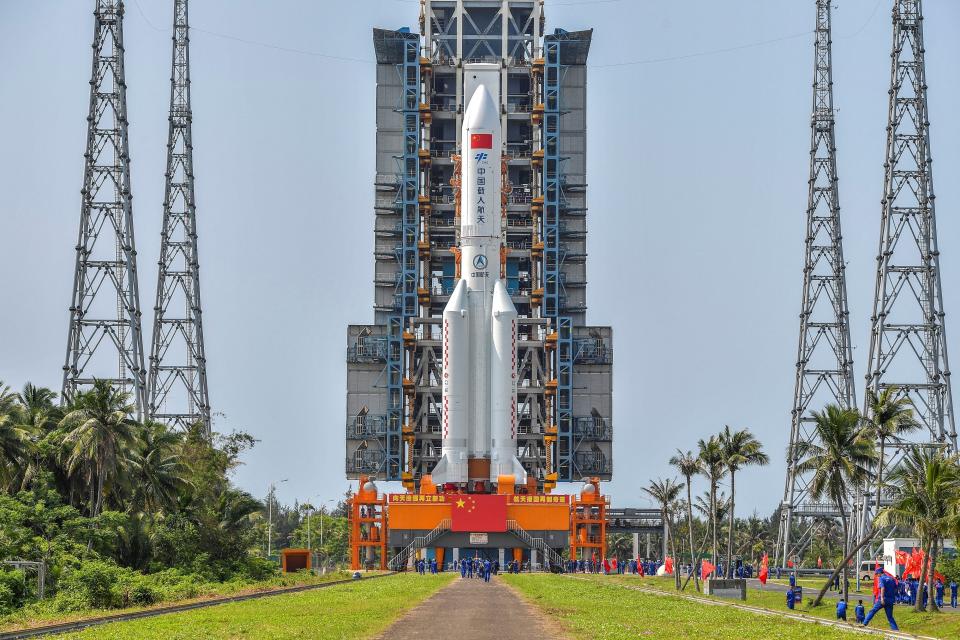Chinese rocket: What happens if out-of-control falling Long March 5B hits Earth?

The Long March 5B rocket is falling back to Earth after launching part of China’s next space station.
The 30-meter long rocket entered orbital velocity, meaning it is now traveling around the world every 90 minutes – too fast for space agencies to tell where it is going to land.
Last year, a similar prototype craft came within 13 minutes of hitting New York City. The craft was eventually confirmed by the US Space Force’s 18th Space Control Squadron to have landed in the Atlantic Ocean.
If the rocket re-enters the atmosphere above a populated area, the result will be akin to a small plane crash scattered over 100 miles, Jonathan McDowell, Astrophysicist at the Astrophysics Centre at Harvard University, has said.
Fortunately, the likelihood is that people will remain safe and there will be little damage to buildings or the environment. This is not due to preventative or defensive measures, however, but rather a question of statistics.
For an uncontrolled re-entry event like this, it is not possible to accurately predict where the object or parts of the object will fall, the European Space Agency (ESA) says.
This is mainly because atmospheric density, which is what will push the rocket’s altitude to eventual re-entry, is not known below 300 kilometres because spacecraft do not fly at such low heights.
The Long March 5B rocket is currently fluctuating at an altitude of between 170 and 372 kilometres, but has been seen dropping to 160 kilometres today.
It is also likely that the object will simply burn up on re-entry, but parts of the rocket with a high melting point could make it to the ground. Experts struggle to know exactly how the rocket will make it through its re-entry, because the Chinese space agency only gives limited information about its spacecraft.
Yet because the Earth is 75 per cent water, and because large areas of land are uninhabited, the risk of any single individual is quite small – with people at more risk driving a car than from this rocket.
“Worst case [scenario] is one of the structural rods hits someone, potentially a fatality but unlikely to see multiple casualties”, McDowell told The Independent. He added that the debris will be travelling at approximately 100 miles-per-hour, so there could be expensive property damage, but because it will be spread over 100 miles, only one or two pieces are likely to hit a populated area.
In the past decade, about 100 satellites and rocket bodies have re-entered the atmosphere each year, with a total annual mass of about 150 tonnes, and the issue of space debris is one that is only going to be exacerbated with time due to a lack of legislation around cleaning up the space around our planet.
Nasa scientist Donald Kessler warned that the domino effect of a crash between two pieces of space detritus could create an impenetrable layer of debris that would make terrestrial space launches impossible – essentially trapping us on Earth.
This potential problem is much greater than the small probability of debris hitting buildings, or even people. In such an event, planned missions to the moon or even terraforming Mars could be irrevocably scuppered.
Read More
Chinese rocket news - live: Tracker says falling spacecraft will crash to Earth within hours

 Yahoo Finance
Yahoo Finance 